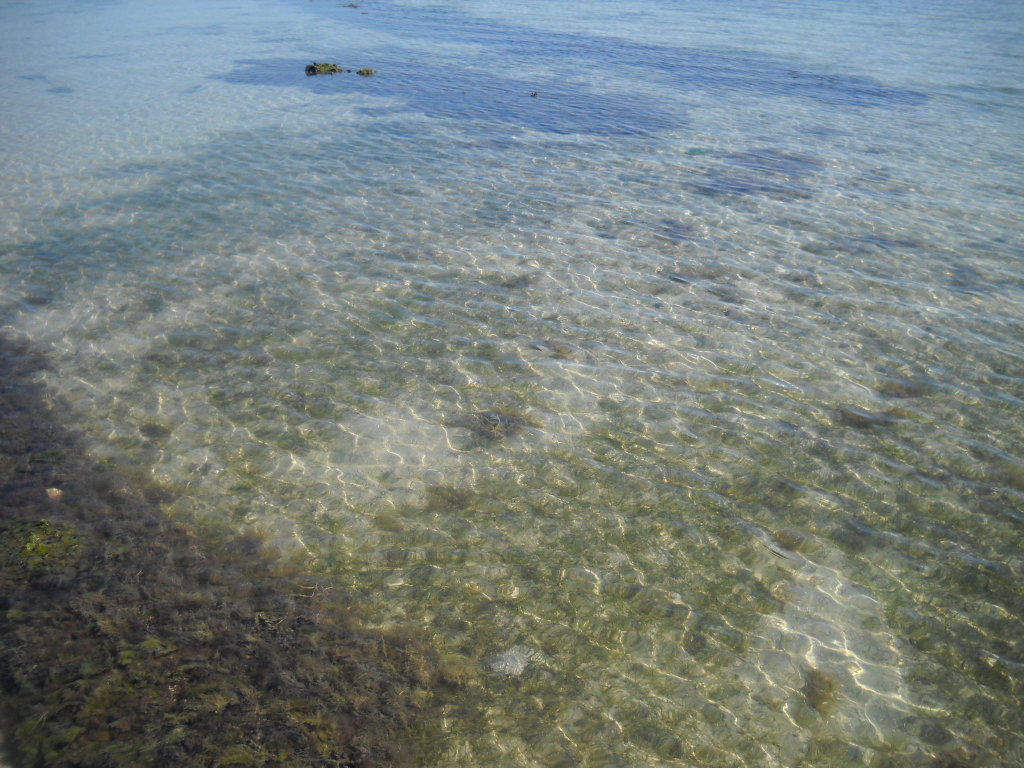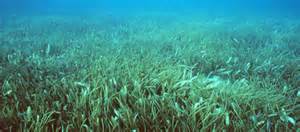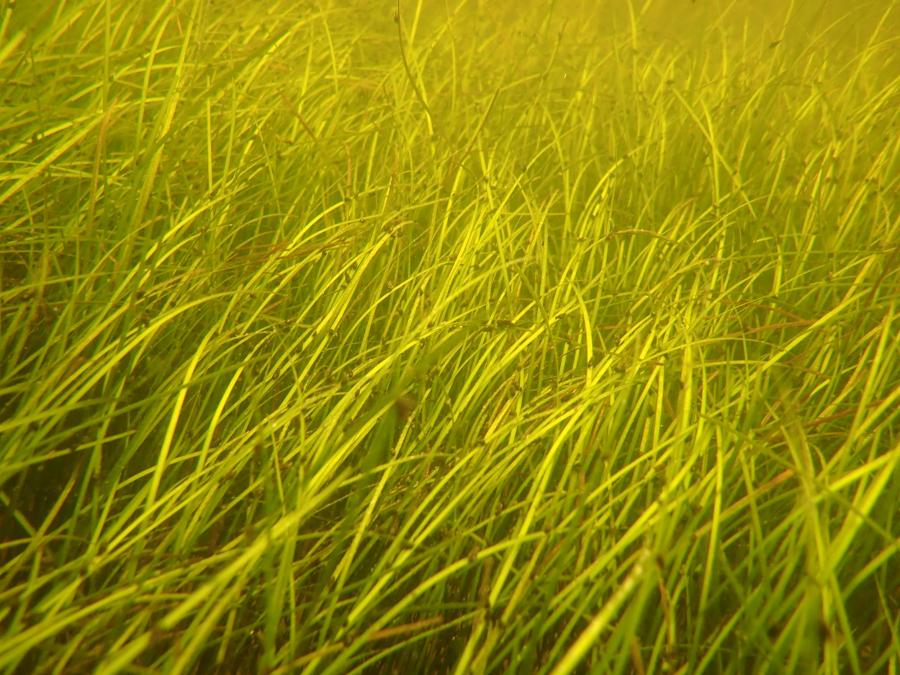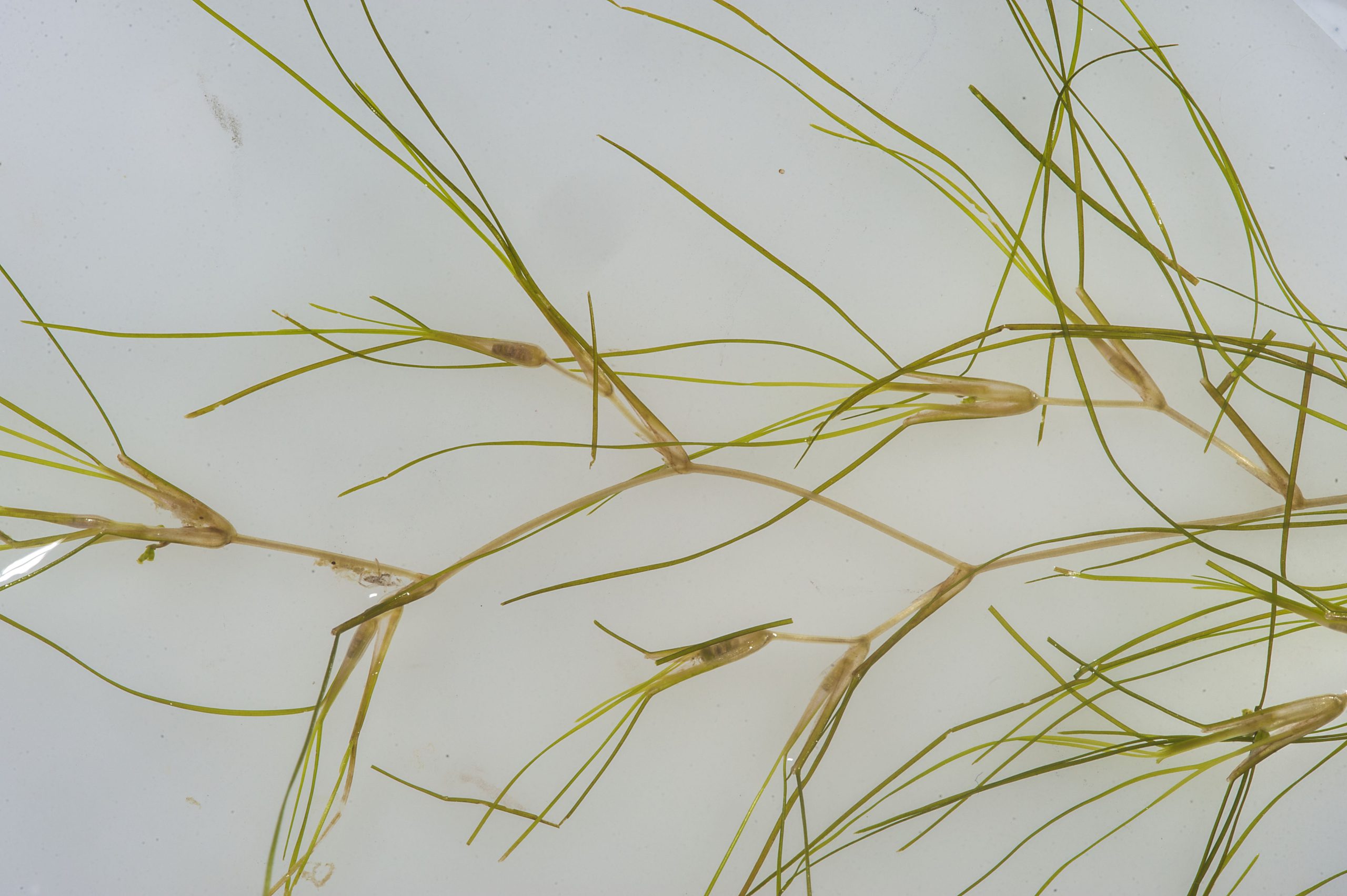Many in the Florida panhandle are aware of the importance of seagrasses to estuarine ecology. They have heard this many times before and have heard how important it is to protect them. Some are aware that they are important as a nursery for many commercial important fin and shellfish. But fewer are aware of the diversity of life that exists in these “fields of grass”. Much of the life there is small and unnoticeable until you don a mask and explore. Even then, you need to slow down and look closely.
In this series on “Sea of Grass” we will be looking at some of the species that reside in these massive meadows expanding the Florida panhandle. We begin with the grasses themselves.

Photo: Rick O’Connor
Seagrasses are just that – grasses that grow “under the sea”. They are similar in many ways to the grasses that grow in your yards. Their blades extend above the sediment and are usually all one sees as they are exploring the meadows. Being true plants, they do have stems – but these stems run horizontally beneath the sediments and are called rhizomes. Rhizomes are like “runners” and extend the plants across the landscape. Many have discovered rhizomes in their yards when pulling weeds. You begin to pull and a the runner exposes itself like pulling a thread from a sweater. From these rhizomes extend the small roots. Like lawn grass, seagrass use the roots to help anchor them in place and remove water and nutrients from the environment. But they are immersed in water and, like many marine creatures, have the ability to desalinate it so they have a source of freshwater.
Like all plants, seagrasses require sunlight for photosynthesis. Thus, they must grow in shallow water. In the western panhandle they are limited by the availability of light and are usually found in the estuaries where the water depth is not more than 10 feet. As you move into the eastern panhandle, particularly close to where the Big Bend begins, there are fewer large rivers depositing muddy water, more expanses of salt marsh to remove sediments from runoff, here seagrasses can grow deeper. Here they can expand into the open Gulf of Mexico itself producing hundreds of thousands of acres of these grass meadows.

Photo: Leroy Creswell
They are not fond of high energy systems. Large waves can rip seagrasses from the bottom and deposit them onshore. In the western panhandle the Gulf generates larger waves and thus the grasses are found in the protection of the lagoons, sounds, and bayous. Near the Big Bend natural wave energy is low enough to support them in the open Gulf. It has been estimated that Florida has between 2.2 and 2.5 million acres of seagrass. Most of this is along the west coast of the peninsula running from the Florida Keys to the Big Bend1.
There are seven known species of seagrass in the state. Three of these are common in the panhandle and an additional one, Manatee grass (Syringodium filiforme), is beginning to expand its range into our area.

Photo: Virginia Sea Grant
Two of our common species prefer more saline water – water with a salinity at least 20 parts per thousand (ppt). Those are Turtle grass (Thalassia testudinum) and Shoal grass (Halodule wrightii). These grasses both have flat blades but differ in blade width. Turtle grass is wider (4-12mm) and resembles St. Augustine grass from our lawns. Because of the wider blade, they grow in deeper water (not being able to tolerate the break waves and whitecaps near the surface). Shoal grass is very thin (<4mm) and feels more like human hair when you run your toes and fingers through it. Manatee grass resembles shoal grass in size but has a round blade instead of a flat one. In the Pensacola area we are beginning to find patches of it growing in Big Lagoon and Santa Rosa Sound.

Photo: Florida Department of Environmental Protection
Widgeon grass (Ruppia martimia) can tolerate the higher salinities of the lower estuary but can also tolerate the lower salinities of the upper estuary. It dominates the lagoons and bayous of the upper Pensacola Bay system. It has a thin flat blade like shoal grass but differs in that it branches as it grows instead of a single blade extending about the surface.

These meadows of seagrass provide food and habitat for a myriad of marine creatures, who we will meet in other posts in this series. In Part 2 we will begin with one that is very important but very few know is even there – the epiphytes.
References
1 Florida Seagrasses. Florida Department of Environmental Protection. https://floridadep.gov/rcp/seagrass.
Source: UF/IFAS Pest Alert
Note: All images and contents are the property of UF/IFAS.



